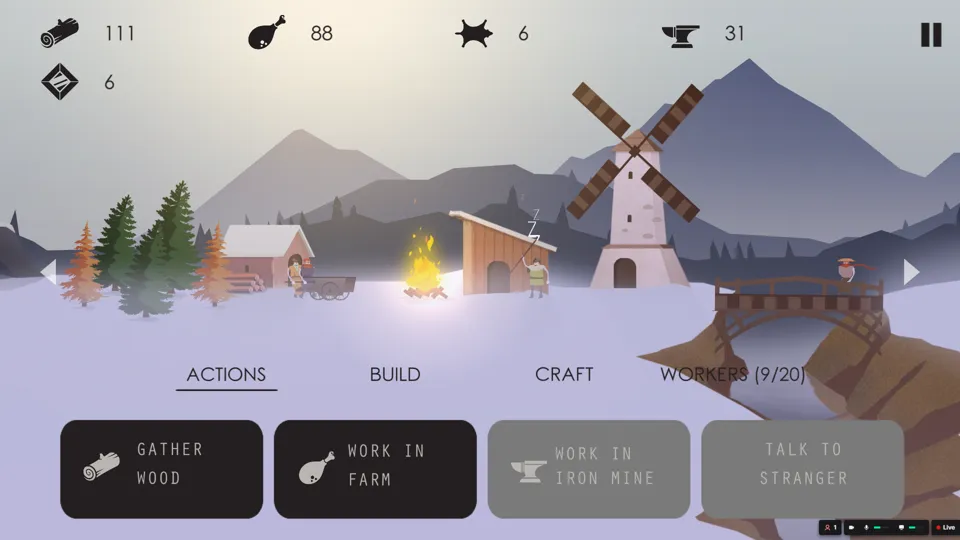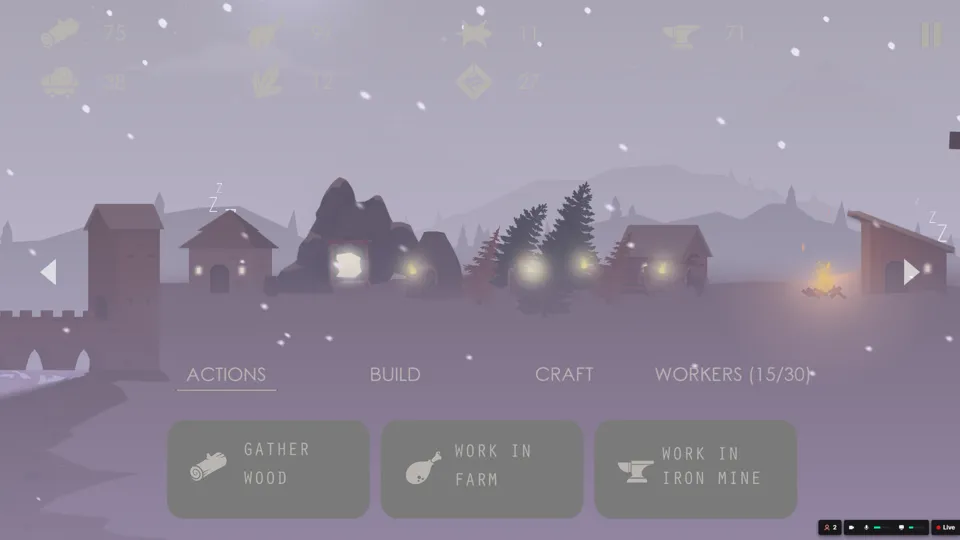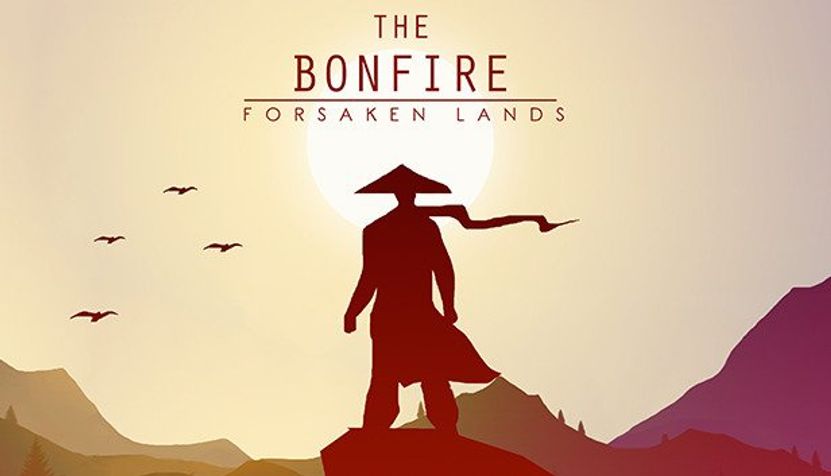Bonfire
I’ve played several city builders at this point, both as part of this series, and in my own time. It’s a genre that I’ve previously discussed as one that I’m fond of because of its avenues for creativity coupled with its needs for forethought and planning. They’re cathartic in the control they grant, and the ability to forge one’s own destiny.
Bonfire: Forsaken Lands is not a city builder, per se, but it has quite a bit in common with them. In many ways, it’s a more automated city builder, mixed with an RPG. It has elements of that same catharsis, but also exposes the potential weaknesses of picking up a town and letting it run.
 It is important to yell at the houses people are sleeping in.
It is important to yell at the houses people are sleeping in.
The Bonfire: Forsaken Lands is a survival, simulation game set in a far-off fantasy land where titans now rule and need to be defeated. You play as a mysterious, be-hatted hero who builds a village, attracts villagers, and goes on quests to find artefacts and defend the settlement against monsters and the inevitable titan. Along the way, you gather resources so you can build more buildings, craft tools, and fuel your growing town.
The gameplay itself is simple and mostly runs itself. I only somewhat jokingly made the comparison to Cookie Clicker and similar idle games, where, once you get the infrastructure in place, the game more or less runs itself. The Bonfire: Forsaken Lands is not fundamentally different, where other than talking to strangers and assigning workers, there isn’t much for the player to actually do. The player can join in attacks and guide expeditions into exotic locales, but beyond that, the game could be left alone for an hour and probably be fine.
 Which is also kind of helpful when there’s white text on a lavender background
Which is also kind of helpful when there’s white text on a lavender background
This isn’t necessarily a bad thing. There is a definite place for more passive games, and I’d argue that’s also a bit inherent to the city-builder genre. The slow accrual of resources with minimal intervention is part of the strategy of the game. However, The Bonfire: Forsaken Lands has the interesting predicament that it isn’t a city-builder. It has elements of the genre, but it’s fundamentally not a city-builder. When there is a set list of buildings that can be constructed, and nothing else to do or build beyond them, and when every city will ultimately look the same, this is fundamentally not a city-builder. It’s an RPG with a timer.
To be clear, more passive gameplay isn’t always a problem either. Something doesn’t have to fit cleanly into a genre to be able to successfully take elements from it. Where The Bonfire: Forsaken Lands struggles, though, is that it takes the resource accrual of city-builders, and channels it towards nothing in particular. There is no particular goal to strive for, once everything is built, and no particular barrier except time. By the end, the game descends into a grind of waiting for scouts to discover something, grinding out random resources, and hoping. Without a goal or something the player can do to tilt the random number generator in their favour, the game becomes a slog, shifting from passively acquiring resources in a cathartic, soothing way, to impatiently staring and waiting for something to go your way.
The first two thirds of The Bonfire: Forsaken Lands are lovely. The art is great, and the quiet catharsis of building a village out of nothing is soothing. It’s in the remainder, the transition from passivity to tedium, that the game struggles. It’s a game that needs to know the limits of its mechanics, and unfortunately does not.
Developer: Xigma Games
Genre: Simulation, Survival
Year: 2018
Country: India
Language: English
Play Time: 3-4 Hours
